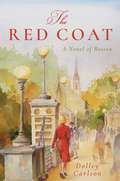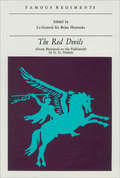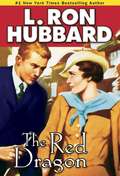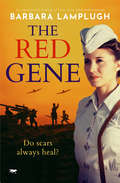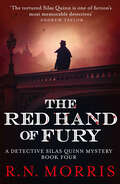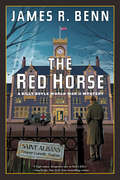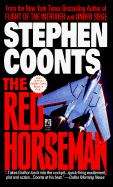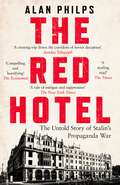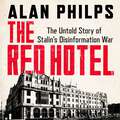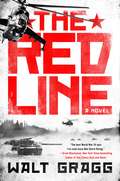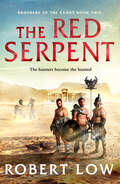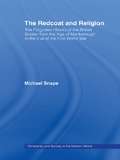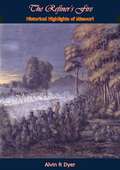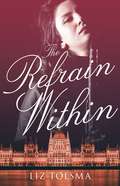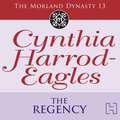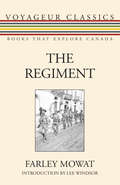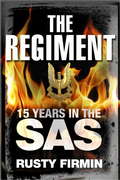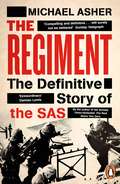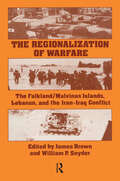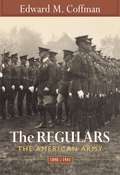- Table View
- List View
The Red Coat: A Novel of Boston
by Dolley CarlsonThink Downton Abbey, set in the heart of Boston Irish domestic worker Norah King's decision to ask her wealthy employer, Caroline Parker, for an elegant red coat that the Beacon Hill matriarch has marked for donation ignites a series of events that neither woman could have fathomed. The unlikely exchange will impact their respective daughters and families for generations to come, from the coat's original owner, marriage-minded collegian Cordelia Parker, to the determined and spirited King sisters of South Boston, Rosemary, Kay, and Rita. As all of these young women experience the realities of life – love and loss, conflict and joy, class prejudices and unexpected prospects – the red coat reveals the distinction between cultures, generations, and landscapes in Boston during the 1940s and 50s, a time of change, challenge, and opportunity. Meet the proud, working-class Irish and staid, upper-class Brahmins through the contrasting lives of these two families and their friends and neighbors. See how the Parkers and the Kings each overcome sudden tragedy with resolve and triumph. And witness the profound impact of a mother’s heart on her children’s souls. Carlson brings us front and center with her knowing weave of Celtic passion – both tragic and joyful – words of wisdom, romance, humor, and historical events. Dive into Boston feet first! The Red Coat is a rich novel that chronicles the legacy of Boston from both sides of the city, Southie and the Hill.
The Red Devils: From Bruneval to the Falklands (Famous Regiments)
by G.G. NortonFrom Bruneval to North Africa, from Normandy to Suez, by parachute and glider the men of the Airborne Forces have gone by air to battle. But their activities have by no means been confined to purely airborne operations- the Special Air Service performed prodigies of valor behind the German Lines in the Western Desert and Italy; the Glider Pilot Regiment fought beside their infantry comrades in Normandy, at Arnhem and across the Rhine. Their post-war successors, maintaining these traditions, have stood between Jew and Arab in Palistine; fought and sweltered in the jungles of Malaya and Borneo; sweated in the Persian Gulf and the Radfan; chocked on the summer dust of Cypriot roads; tasted the grit and sand of Egypt and Jordan in their mess mess tins; spent more then a decade facing terrorist ambush, bombs and bullets in Northern Ireland; experienced subzero temperatures and biting arctic winds in the South Atlantic and 'tabbed' across the Falklands to spearhead victory in 1982. Now should the aircrews who flew them be forgotten, or the air supply dispatches who maintained them, or the units who supported them. With well over 100 photographs and illustrations this book is a comprehensive single-volume history of the Airborne Forces. Accounts are given of the airborne actions fought by the British Army, whilst the development of the parachute assault and the use of the glider-borne troops can be followed from their infancy to the massive coup de main technique employed in the Rhine crossing.
The Red Dragon
by L. Ron HubbardFlame-haired Michael Stuart's career as an officer in the US Marine Corps abruptly ended after a failed attempt to return the Chinese Imperial Dynasty to power in 1930s Asia. Abandoned by his country, he's unable to find safe passage out of China by land or sea. Now Stuart, also known as the "Red Dragon," has a new occupation; he intervenes in matters for the good of the people. Despite the danger, Stuart agrees to help a beautiful young woman search for a mysterious black chest which her father hid in Manchuria before his murder. Their quest takes them from Peking north to the Great Wall of China and beyond. With enemies coming at him from every corner, Stuart finds he's playing a most deadly game of hide-and-seek.
The Red Gene: An Emotional Drama of Love, Loss and Redemption
by Barbara Lamplugh“Traces the intergenerational legacies of the Spanish civil war through two groups of families . . . an enthralling novel with real historical heft.” —Judith Keene, author of Treason on the AirwavesWhen Rose, a young English nurse with humanitarian ideals, decides to volunteer in the Spanish Civil War, she is little prepared for the experiences that await her.Working on the front line and witness to the horrors of war, she falls in love with a Republican fighter. As defeat becomes inevitable, Rose is faced with a decision that will change her life and leave her with lasting scars.Meanwhile we meet Consuelo, a girl growing up in a staunchly Catholic family on the other side of the ideological divide. When she discovers that she was adopted, her attempts to learn more about her origins come to a dead end.But years later Consuelo’s daughter, Marisol, growing up in a rapidly changing Spain, decides to investigate the dark secrets of her family and find the answers that have until now eluded her mother . . .What links Rose and Consuelo? Will Marisol uncover the truth?Sometimes the truth lies in the darkest places.“A wonderful book. It is so evocative of 1930s Britain and the generation for whom Spain was a huge issue . . . I really enjoyed reading it, with so many of the characters so brilliantly realised.” —Jeremy Corbyn, former leader of the Labour Party“The big themes of history are brought alive through the stories of a diverse cast of characters.” —John Simmons, author of Spanish Crossing
The Red Hand of Fury (Detective Silas Quinn Mysteries)
by R. N. MorrisA series of bizarre suicides force a police inspector to go undercover in an asylum in this chilling historical mystery set in pre–World War I London. June, 1914. A young man is mauled to death at London Zoo after deliberately climbing into the bear pit. Shortly afterwards another man leaps to his death from the notorious Suicide Bridge. Two seemingly unconnected deaths—and yet there are similarities. Following a third attempted suicide, Detective Inspector Silas Quinn knows he must uncover the link between the three men if he is to discover what caused them to take their own lives. The one tangible piece of evidence is a card found in each of the victims&’ possession, depicting a crudely drawn red hand. What does it signify? To find the answers, Quinn must revisit old, disturbing memories. But can he keep his sanity in the process? Perfect for fans of Abir Mukherjee, S. G. MacLean and Susanna Gregory.Praise for The Red Hand of Fury&“Taut and twisty with a psychological intensity that&’s rare and compelling.&” —Kirkus Reviews&“Fans of traditional puzzle mysteries . . . will be rewarded.&” —Publishers Weekly
The Red Horse (A Billy Boyle WWII Mystery #15)
by James R. BennJust days after the Liberation of Paris, US Army Detective Billy Boyle and Lieutenant Kazimierz are brought to Saint Albans Convalescent Hospital in the English countryside. Kaz has been diagnosed with a heart condition, and Billy is dealing with emotional exhaustion and his recent methamphetamine abuse. Meanwhile, Billy’s love, Diana Seaton, has been taken to Ravensbrück, the Nazi concentration camp for women, and Kaz’s sister, Angelika, who he recently learned was alive and working with the Polish Underground, has also been captured and transported to the same camp. This news is brought by British Major Cosgrove, who asks Billy for help, unofficially, in solving what he thinks was the murder of a British agent recuperating at Saint Albans. The convalescent hospital is really a secret installation for those in the world of clandestine warfare to recover from wounds, physical and emotional. Some are allowed to leave; others are deemed security risks and are detained there. When a second body is found, it is evident that a killer is at work in this high-security enclave. Now Billy must carry out his covert investigation while maintaining his tenuous recovery, shielding his actions from suspicious hospital authorities, and dodging the unknown murderer.
The Red Horseman (Jake Grafton #5)
by Stephen CoontsAs the infrastructure of the Soviet Union crumbles before the world's eyes, twenty-thousand tactical nuclear weapons, once under the command of the Soviet military, are up for grabs - and U.S. Intelligence believes they may soon appear on the open market. Rear Admiral Jake Grafton, Deputy Director of the Defense Intelligence Agency, is dispatched to Moscow. His assignment: ensure that the weapons are destroyed before they disappear into a middle East terrorist pipeline. But Grafton discovers that unidentified American officials want his mission to fail - and will go to any length to stop it. Meanwhile, off the coast of the Canary Islands, the body of British billionaire and media magnet Nigel Keren has been found floating in the sea near his yacht. Grafton's contacts in Israeli Intelligence have evidence he was the victim of a hit squad from within the CIA. It's the kind of knowledge that could prove fatal, but Grafton can't back off: if the freelance operation succeeds, middle east hostility could explode into an international conflagration. The only thing Grafton knows for sure is that he has been targeted for assassination, and the conspiracy is clearly stamped: made in America.
The Red Hotel: The Untold Story of Stalin’s Disinformation War
by Alan Philps'A riveting trip down the corridors of Soviet deception' Sunday Telegraph (Five-Star Review)In THE RED HOTEL: THE UNTOLD STORY OF STALIN'S DISINFORMATION WAR, former Daily Telegraph Foreign Editor and Russian expert Alan Philps sets out the way Stalin created his own reality by constraining and muzzling the British and American reporters covering the Eastern front during the war and forcing them to reproduce Kremlin propaganda. War correspondents were both bullied and pampered in a gilded cage of the Metropol Hotel. They enjoyed lavish supplies of caviar and had their choice of young women to employ as translators and to share their beds.While some of these translators turned journalists into robotic conveyors of Kremlin propaganda, others were brave secret dissenters who whispered to reporters the reality of Soviet life and were punished with sentences in the Gulag. Through the use of British archives and Russian sources, the story of the role of the women of the Metropol Hotel and the foreign reporters they worked with is told for the first time. With a riveting narrative very much in the same wheelhouse as Ben McIntyre's Agent Sonya this revelatory story will finally lift the lid on Stalin's operation to muzzle and control what the western allies' writers and foreign correspondents knew of his regime's policies to prosecute the war against Hitler's rampaging armies from June 1941 onwards.
The Red Hotel: The Untold Story of Stalin’s Disinformation War
by Alan PhilpsIn THE RED HOTEL: THE UNTOLD STORY OF STALIN'S DISINFORMATION WAR, former Daily Telegraph Foreign Editor and Russian expert Alan Philps sets out the way Stalin created his own reality by constraining and muzzling the British and American reporters covering the Eastern front during the war and forcing them to reproduce Kremlin propaganda. War correspondents were both bullied and pampered in a gilded cage of the Metropol Hotel. They enjoyed lavish supplies of caviar and had their choice of young women to employ as translators and to share their beds. While some of these translators turned journalists into robotic conveyors of Kremlin propaganda, others were brave secret dissenters who whispered to reporters the reality of Soviet life and were punished with sentences in the Gulag. Through the use of British archives and Russian sources, the story of the role of the women of the Metropol Hotel and the foreign reporters they worked with is told for the first time. With a riveting narrative very much in the same wheelhouse as Ben McIntyre's Agent Sonya this revelatory story will finally lift the lid on Stalin's operation to muzzle and control what the western allies' writers and foreign correspondents knew of his regime's policies to prosecute the war against Hitler's rampaging armies from June 1941 onwards.(P) 2023 Headline Publishing Group Ltd
The Red Knight Of Germany - The Story Of Baron Von Richthofen, Germany’s Great War Bird [Illustrated Edition]
by Floyd Gibbons[16 Illustrations, portraits of the author, author's unit and plane.]In the small city of Wiesbaden in southwest Germany, a small headstone proclaims that the incumbent of its grave is Rittmeister Manfred Freiherr von Richthofen. Small fanfare and panoply for the far-famed and feared Red Baron; a hunter even during his childhood, he took to the skies above France and Flanders in 1915 following service as a cavalry officer. In the air he hunted his prey, almost exclusively British pilots, and by the time of his death in 1918 was credited with some 80 air combat victories. He was only 25 at the time of his death.American author Floyd Gibbon's biography seeks to give a fuller and more realistic portrait of Manfred von Richthofen than is widely known; to his German countryman he seemed to be a superhuman hero of the skies; to the Allies who opposed him, he seemed a ruthless bogeyman. The truth is far more complex than this as the author explains in great detail, using von Richthofen's own autobiography and other contemporary sources in order to produce a portrait of the greatest World War One Ace.
The Red Line
by Walt GraggWWIII explodes in this electrifying debut military thriller in the tradition of Red Storm Rising and The Third World War.“Delta-Two, I’ve got tanks through the wire! They’re everywhere!” World War III explodes in seconds when a resurgent Russian Empire launches a deadly armored thrust into the heart of Germany. With a powerful blizzard providing cover, Russian tanks thunder down the autobahns while undercover Spetsnaz teams strike at vulnerable command points. Standing against them are the woefully undermanned American forces. What they lack in numbers they make up for in superior weapons and training. But before the sun rises they are on the run across a smoking battlefield crowded with corpses. Any slim hope for victory rests with one unlikely hero. Army Staff Sergeant George O'Neill, a communications specialist, may be able to reestablish links that have been severed by hostile forces, but that will take time. While he works, it’s up to hundreds of individual American soldiers to hold back the enemy flood. There’s one thing that’s certain. The thin line between victory and defeat is also the red line between life and death.From the Trade Paperback edition.
The Red Serpent (Brothers Of The Sands)
by Robert LowIt's a mad and violent world. They must be equal to it.Ex-gladiators Drust, Kag, and their brutal band are as dirt-ridden and downbeat as ever.Drawn to the Syrian frontier at the edge of the Roman world, they are presented with a mysterious riddle from old companions. In the scorching heat, schemes and rumours breed like flies on a corpse.To survive a deadly plot, Drust and his men must face all challengers along with Mother Nature's rage.Sometimes they'll run as fast as they can pray to the Gods. But sometimes they'll have to stand, and fight...Filled with gristle, gore and jaw-dropping action, perfect for fans of Giles Kristian, David Gilman and Conn Iggulden.Praise for Robert Low'A master of the storyteller's art' S. J. A. Turney, author of the Knights Templar series
The Red: First Light (The Red Trilogy #1)
by Linda NagataA Publishers Weekly Best Book of 2015 Reality TV and advanced technology make for high drama in this political thriller that combines the military action of Zero Dark Thirty with the classic science fiction of The Forever War.Lieutenant James Shelley, who has an uncanny knack for premeditating danger, leads a squad of advanced US Army military tasked with enforcing the peace around a conflict in sub-Saharan Africa. The squad members are linked wirelessly 24/7 to themselves and a central intelligence that guides them via drone relay—and unbeknownst to Shelley and his team, they are being recorded for a reality TV show.When an airstrike almost destroys their outpost, a plot begins to unravel that’s worthy of Crichton and Clancy’s best. The conflict soon involves rogue defense contractors, corrupt US politicians, and homegrown terrorists who possess nuclear bombs. Soon Shelley must accept that the helpful warnings in his head could be AI. But what is the cost of serving its agenda?
The Redcoat and Religion: The Forgotten History of the British Soldier from the Age of Marlborough to the Eve of the First World War (Christianity and Society in the Modern World)
by Michael SnapeThis compelling study presents the most comprehensive examination available of the role of religion in the army during the eighteenth and nineteenth centuries. Through extensive analysis of official military sources, religious publications and personal memoirs, Michael Snape challenges the widely-held assumption that religion did not play a role in the British Army until the mid-Victorian period, and demonstrates that the British soldier was highly susceptible to religious influences long before the Crimean War and Indian Mutiny rendered the subject of wider public concern. In The Redcoat and Religion Snape argues that religion was of significant, even defining, importance to the British soldier and reveals the enduring strength and vitality of religion in contemporary British society, challenging the view that the popular religious culture of the era was wholly dependent upon the presence and activities of women. Students of British history, military history, and religion will all find this an insightful resource for their studies.
The Refiner's Fire: Historical Highlights of Missouri
by Alvin R. DyerTo members of The Church of Jesus Christ of Latter-day Saints the state of Missouri is not only a place of tragic history, but also one with a glorious future. Here, according to the revelations from the Lord to the Prophet Joseph Smith, many great events will transpire in the culmination of God's work in the latter-days of man's earth-life existence. To know of this area's history and to visit the places of prophetic historical renown in Jackson, Clay, Caldwell, and Daviess counties in Missouri is to experience a feeling and a sense of the nearness of these mighty events of the future. Maps contained in this volume will help identify the places of historic significance, for those who will visit these places. The numerous photographs, many in full color, will bring a new dimension of the area to those whose only visit may be through this book. All who read this volume will see woven through the historical accounts and the quotations from the revelations of the Lord the thread of divine continuity, and will gain a great sense of urgency about the work, and a desire to be part of the great sense of urgency about the work, and a desire to be part of the great future in the "center place of Zion."
The Refrain Within (Music of Hope #3)
by Liz TolsmaTo save a life, would you betray everyone you love?Hungary in 1944 is a dark place. The Nazis have invaded and turned the country upside down, their evil making its way into every life.Clarinetist Eva Bognar is engaged to conductor and composer Patrik Kedves, happily planning her wedding. At first she doesn’t think the war will affect her directly; everyone around her can be trusted to do the right thing. Then her Jewish best friend and sister-in-law Zofia goes missing--and instead of the Gestapo being to blame, a friend says it was Patrik who led Zofia away. Has he betrayed Eva and everything the family stands for?When the rest of the family’s lives are directly threatened, Patrik’s secrets must come to light. The Bognars flee for the border in hopes of getting out of the country to the safety of Palestine. Eva must put her life and the lives of everyone she loves in the hands of the very man who betrayed her--and they may not all make it out of the war alive . . .
The Refugee's Daughter
by Carolyn NewtonAmid wartime brutality and unimaginable suffering, a teenager in flight from the Soviet Army struggles to survive, find her brother—and hold on to hope . . .Winter 1945. The Red Army has its sights set on punishing Germans for the Nazis&’ reign of terror. Thirteen-year-old Giti and her younger brother, Otto, live with their mother and grandmother. After soldiers arrive and brutally attack the two adult women, killing their grandmother, the farm is set ablaze and the survivors are loaded into a crowded train bound for the Soviet Union. When further tragedy strikes, the two children are left to fend for themselves. Giti is determined to lead them to freedom, but her escape plan goes horribly wrong. Otto is trapped onboard and left alone heading north. Wandering into the forest, the traumatized and mute Giti is rescued by a man hiding in the woods. The two strike up an unlikely bond and help each other survive—until Russian soldiers arrive . . . As Giti fights for her life, she is determined to be reunited with her brother. But how long will she have to wait, and will the reunion be as joyful as she envisaged?
The Refusal Camp: Stories
by James R. BennThese dazzling stories show a crime fiction veteran at the height of his career.In his first-ever collection, the award-winning author of the Billy Boyle World War II mysteries presents an eclectic mix of new and previously published mystery stories rife with historical detail and riveting wartime storytelling.&“The Horse Chestnut Tree&” explores betrayal and murder during the American Revolution. In the speculative work &“Glass,&” an atomic supercollider and the breakdown of the time-space continuum change the lives of two cousins devoured by greed. &“Vengeance Weapon,&” a historical thriller about an enslaved Jewish laborer working at the Dora concentration camp, looks at how far someone will go to get revenge. And for his Billy Boyle fans, Benn delivers &“Irish Tommy,&” a police procedural set in 1944 Boston featuring Billy&’s father and uncle.Full of terror, action, amusement, and bliss, The Refusal Camp is a must-have collection from a crime fiction veteran at the height of his career.
The Regency: The Morland Dynasty, Book 13 (Morland Dynasty #13)
by Cynthia Harrod-Eagles1807: the Napoleonic Wars continue and their violence reverberates in the lives of the Morland family.Lucy trying to rebuild her life after the death of her lover, Captain Weston, is thrown into doubt and confusion by an unexpected proposal of marriage. At Morland Place, the hard-won happiness of James and Heloise is threatened by his rebellious daughter, Fanny. As heiress to the Morland estate, Fanny is determined to claim more than her inheritance, but for those dependent on her generosity, Fanny's decision to marry the unscrupulous Lieutenant Hawker brings only anxiety.These troubled times hold many surprises, and in their darkest hour the Morlands make an astonishing discovery which enables them to face the uncertain future with new strength.
The Regency: The Morland Dynasty, Book 13 (Morland Dynasty #13)
by Cynthia Harrod-Eagles1807: the Napoleonic Wars continue and their violence reverberates in the lives of the Morland family.Lucy trying to rebuild her life after the death of her lover, Captain Weston, is thrown into doubt and confusion by an unexpected proposal of marriage. At Morland Place, the hard-won happiness of James and Heloise is threatened by his rebellious daughter, Fanny. As heiress to the Morland estate, Fanny is determined to claim more than her inheritance, but for those dependent on her generosity, Fanny's decision to marry the unscrupulous Lieutenant Hawker brings only anxiety.These troubled times hold many surprises, and in their darkest hour the Morlands make an astonishing discovery which enables them to face the uncertain future with new strength.
The Regiment
by Farley Mowat Lee WindsorThe story of an astonishing band of Canadian soldiers and their part in the Allied victory in Italy. The Hastings and Prince Edward Regiment (the Hasty Ps) was Canada’s most decorated regiment in the Second World War, winning thirty-one battle honours. Famed for their role in the Allied invasion of Sicily and the conquest of Italy, for six years the members of the regiment suffered brutal conditions, fighting bravely in the face of fierce opposition from the enemy, and ultimately triumphing. In The Regiment (originally published in 1955), Farley Mowat, famed Canadian fiction writer and regiment member, tells the story of the Hasty Ps, from their recruitment in September 1939 until the end of the war. Mowat was a second lieutenant and platoon leader with the regiment, and writes movingly of the great suffering his fellow soldiers endured, their bravery in battle, and the lasting friendships he forged as a member of the group.
The Regiment: 15 Years in the SAS
by Rusty FirminThis is the unforgettable chronicle of Rusty's combat experiences, transporting the reader back to the cutting edge of the SAS's deadly covert missions during the crises of the 80s and 90s. But even more fascinating is his intimate portrayal of what the service was actually like to live and work in. Having served as a paramedic, a demolitions expert, a linguist and ultimately the senior SAS bodyguard instructor, Rusty draws on a unique breadth of experience to delve into the hidden world of the SAS as an institution.From its early beginnings in World War II, the Special Air Service (SAS) has won renown in some of the most dramatic, dangerous and controversial military special operations of the 20th century. It is a secretive and mysterious unit, whose operations and internal structures are hidden from the public eye. Now, one of its longest-serving veterans offers a glimpse into the shadowy world of the SAS. Rusty Firmin spent an incredible 15 years with 'The Regiment' and was a key figure in the assault on the Iranian Embassy in London in May 1980, the near-suicidal planned attack on Argentina (operation MIKADO) during the Falklands war and the secret conflict between the SAS and the IRA in the 80s.
The Regiment: The Definitive Story of the SAS
by Michael AsherFrom the bestselling author of The Real Bravo Two Zero comes the definitive history of the world's most elite fighting force - the SAS'Breathtaking bravery, astonishing feats of endurance, raids and battles described with terrific immediacy and pace. Compelling and definitive . . . will surely not be bettered' Sunday TelegraphOn 4 May 1980, seven terrorists holding twenty-one people captive in the Iranian Embassy in London's Prince's Gate, executed their first hostage. They threatened to kill another hostage every thirty minutes until their demands were met. Minutes later, armed men in black overalls and balaclavas shimmied down the roof on ropes and burst in through windows and doors. In seconds all but one of the terrorists had been shot dead, the other captured.For most people, this was their first acquaintance with a unit that was soon to become the ideal of modern military excellence - the Special Air Service regiment. Few realized that the SAS had been in existence for almost forty years, playing a discreet, if not secret, role almost everywhere Britain had fought since World War II, and had been the prototype of all modern special forces units throughout the world.In The Regiment, Michael Asher - a former soldier in 23 SAS Regiment - examines the evolution of the special forces idea and investigates the real story behind the greatest military legend of the late twentieth century.'Detailed, scathingly honest. Asher has brought the critical eye of the knowledgeable insider to his in-depth study of SAS operations and personalities' HeraldPraise for Michael Asher: 'This is the most complete picture of the Sudanese campaigns that has yet been published . . . a vigorous and engrossing narrative' Philip Ziegler, Daily Telegraph'A staggering achievement. Asher has delivered a scintillating tale of a period of history that deserves to be remembered' Guardian
The Regionalization of Warfare: The Falkland/Malvinas Islands, Lebanon, and the Iran-Iraq Conflict
by James Brown William P. SnyderThree wars have dominated world events in recent years: The conflict which erupted between the United Kingdom and Argentina over the Falkland/Malvinas Islands; the multinational conflict in Lebanon involving Irsaeli, Syrian, and FLO forces in Lebanon; and the savage struggles between ground and air units of the Iranian and Iraqi forces. The scale and intensity of these wars, their potential for global conflict, make them crucial for an understanding among citizens in general, and defense and political analysts in particular.The authors and contributors to this most unusual volume come to several common conclusions: professionalism is a crucial factor in military effectiveness, but not necessarily dependent on modes of recruitment; high technology is crucial, but only in relation to the quality and training of the personnel; public support is necessary to sustain military morale in democratic and authoritarian regimes alike. These are only some of the incisive findings registered and explored in The Regionalization of Warfare.The volume a'ssembles experts not only on these three major regional and interregional conflicts, but on current U.S. defense policies; Soviet strategic interests in Middle East and Persian Gulf conflicts; and a series of papers on lessons learned and unlearned as a result of these "small wars" of the early 1980s. For those interested in military history, global strategy, and regional rivalries, this -collection of finely written, sophisticated papers will prove to be of intense concern.
The Regulars: The American Army, 1898-1941 (Studies In War, Society, And The Military Ser.)
by Edward M. CoffmanIn 1898 the American Regular Army was a small frontier constabulary engaged in skirmishes with Indians and protesting workers. Forty-three years later, in 1941, it was a large modern army ready to wage global war against the Germans and the Japanese. In this definitive social history of America's standing army, military historian Edward Coffman tells how that critical transformation was accomplished. Coffman has spent years immersed in the official records, personal papers, memoirs, and biographies of regular army men, including such famous leaders as George Marshall, George Patton, and Douglas MacArthur. He weaves their stories, and those of others he has interviewed, into the story of an army which grew from a small community of posts in China and the Philippines to a highly effective mechanized ground and air force. During these years, the U.S. Army conquered and controlled a colonial empire, military staff lived in exotic locales with their families, and soldiers engaged in combat in Cuba and the Pacific. In the twentieth century, the United States entered into alliances to fight the German army in World War I, and then again to meet the challenge of the Axis Powers in World War II. Coffman explains how a managerial revolution in the early 1900s provided the organizational framework and educational foundation for change, and how the combination of inspired leadership, technological advances, and a supportive society made it successful. In a stirring account of all aspects of garrison life, including race relations, we meet the men and women who helped reconfigure America's frontier army into a modern global force.
